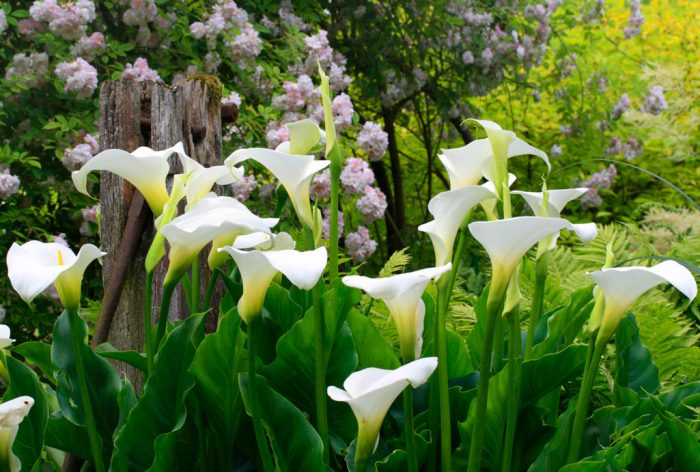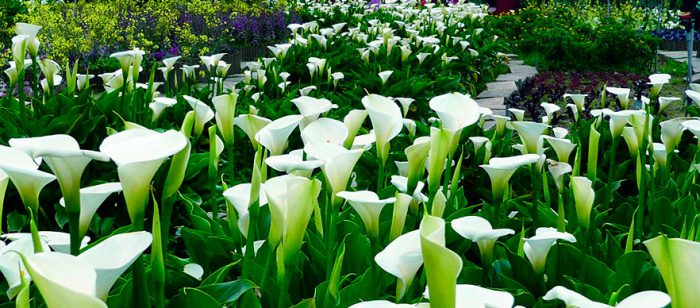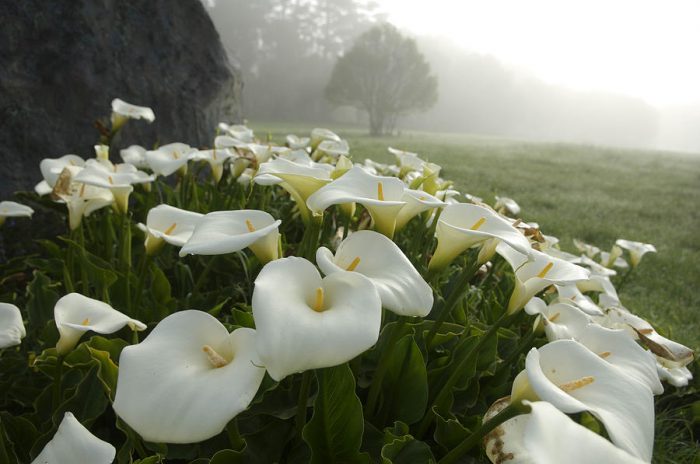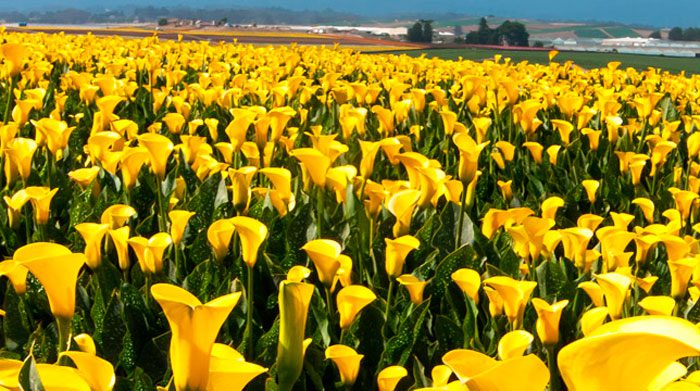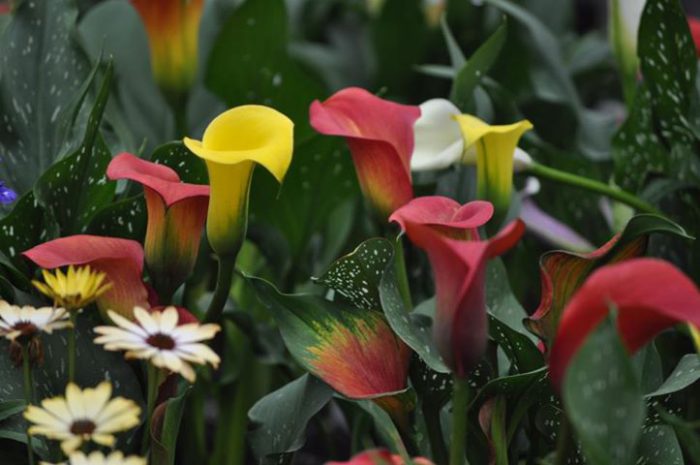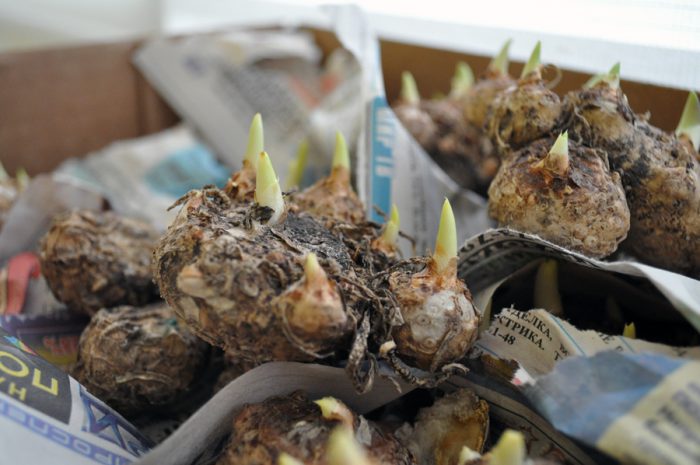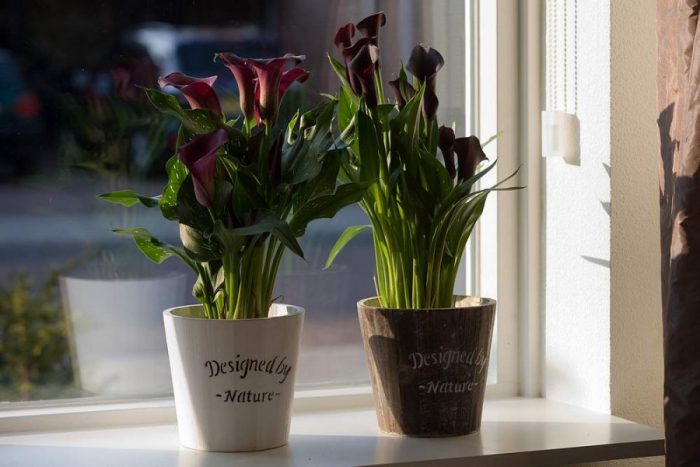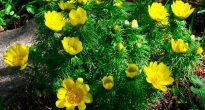Calla is also called Zantedeschia. Such a plant, which is a perennial, is directly related to the genus Aronica or Aroid. It prefers to grow in very damp places in Africa (from Tanzania to Nigeria), as well as in South America. Such a plant is related to the marsh calla (calla lily). This plant is the only representative of its kind, while it grows in the wild only in the Northern Hemisphere. These flowers are also called richardia or Ethiopian calla lily. Such a name as the zantedeskia plant received from the German K. Sprengel a famous botanist. And he gave this name to the flower in honor of his Italian friend D. Zantedeschi, who was also a botanist. However, the more popular name for this plant is calla. Such a flower is very popular with flower growers, because it has beautiful leaves, as well as a very spectacular flower of an unusual shape. And we also love it because it can be grown both outdoors and at home.
Content
Features of plant care
This plant, like any other, must be properly looked after. At the same time, the most important feature of callas is that they grow well both outdoors in open soil and indoors in pots. General care rules:
- When planting, calla lilies should not be buried in the soil. Their root system is sprinkled with earth only a little. This will help prevent rot.
- Inexperienced growers call the coverlet (covering leaf) the flower of this plant. It wraps around the ear of the inflorescence. Real flowers are small in size and do not have an attractive appearance. But they are very fragrant.
- Calla can emerge for a long time (about a month). The fact is that first of all, it grows roots, and then the sprout itself appears.
- It is very easy to damage the tubers when digging up, so this procedure should be carried out with great care.
- Interestingly, this plant is called a "living barometer". The fact is that before the rain, the air humidity rises, and the calla reacts by forming water droplets at the tips of the leaf plates.
- For planting, it is recommended to use a container with porous walls, especially when it comes to Ethiopian calla, which also prefers to grow alone (without neighbors). This will allow excess moisture to evaporate.
- The flower lasts for about 4 weeks.
- A systematic replacement of the topsoil in the pot is required. To do this, you need to remove the top layer of soil and put a new one, while trying not to disturb the root system.
The main types and varieties of calla lilies with a photo
There are 8 different types of these plants in the genus, but only 3 are very popular among florists and gardeners. It is they that breeders use for their work, while receiving many new varieties.
Calla Ethiopian (Calla aethiopica)
This is a fairly tall plant, the flowers of which are white in color. Peduncles can be longer than 100 centimeters, while instead of a bulb in such a calla, the underground part is a rhizome. Such a plant is very fond of moisture and has large glossy green leaf plates that do not fade even during dormancy. The most popular varieties:
- "Nicolai" - the peduncle can reach a length of 150 centimeters. The dark green leaves are arrow-shaped and have rather long petioles. The lower part and the outer surface of the bedspread are green in color, and its diameter varies from 8 to 12 centimeters.
- Pearl - a compact plant that reaches a height of 50 centimeters. The best option for growing in an apartment.
- Schone Zweibruckerin - the peduncle reaches 100 centimeters in length. The heart-shaped leaf plates are light in color, the lower part of the veil is dark green, and the diameter of the part on top varies from 10 to 15 centimeters.
- Green goddess - these are very beautiful and fairly large plants, the height of which can be about 90 centimeters.
Calla rehmannii
This is a fairly compact plant, the height of which does not exceed 70 centimeters. The bedspread most often has a pink color, but it can be pink-red or burgundy-lilac. The narrow leaves are colored green. Underground there are tubers similar to those found in gloxinia or begonias. In autumn, it sheds foliage, and in winter there is a dormant period. The most popular varieties:
- Chameleon - a compact plant, the cover of which has a peach color with a golden sheen. Suitable for outdoor and indoor cultivation.
- The evening - satin purple-black plant.
- Indian summer - red with pomegranate tint.
Calla elliottiana
There are quite large green leaf plates with a heart shape, there are specks on their surface. The seamy side of the veil is yellow, and the front is yellow-green. The height of the bush is about half a meter. Most popular varieties:
- Yellow corner - on the surface of saturated green leaf plates there is a speck of a pale yellow color. The bedspread is sunny yellow.
- Vermeer - the front surface of a slightly wavy bedspread is white-marble, the seamy is cherry-lilac with a deep dark purple tint. There are whitish dots on the surface of the dark green leaves.
- Black-eyed beauty - the bedspread has a creamy shade with a slight lemon tint. There is a speck on the surface of the foliage.
There are also species of calla that grow only in the wild: white-spotted calla (Calla albomaculata), joyful calla (Calla jucunda), sweet calla (Calla odorata), (Calla pentlandii), powerful calla (Calla valida).
Features of growing garden calla lilies
Callas will be an excellent decoration for any garden, as they have an unusually decorative look. The places where these flowers grow are similar to the Arabic ornamental painting. Every year, new spectacular leaves grow in them, and the main decoration appears - an arrow-peduncle ...
This plant needs an open area that is large enough. It prefers nutrient-rich soil. However, it is recommended to shade it from the scorching direct rays of the sun, as they are capable of burning the foliage. In this regard, calla lilies are recommended to be planted in close proximity to shrubs or trees. Fertile soil should be acidic or slightly acidic.It should also be well-drained, since if the tubers are constantly waterlogged, this can destroy the plant. The most suitable soil mixture for planting is sand, leaf humus, earth and peat, which must be combined in equal proportions.
Planting calla lilies in open ground
Spring planting
Landing in open ground is carried out in the first days of May. Before planting the planting material, it must be immersed in a potassium manganese solution for 30 minutes. After that, a thorough examination is carried out. The affected areas should be carefully cut out and then treated with brilliant green.
A complex mineral fertilizer should be applied to the soil (for 1 square meter from 30 to 40 g). The earth must be dug up. The depth of the holes is from 5 to 10 centimeters, and the distance between them is 30–40 centimeters. The tuber is dipped into the hole, buried in, and this place is well watered. It should be remembered that calla lilies do not sprout earlier than in 2–4 weeks, because the underground part must form first. You should not tear the hole apart to make sure everything is in order. After planting for half a month, the plant does not need watering.
There is a way to prepare this plant for planting in open soil. So, for this, in the last March days or the first April days, you need to plant the tubers in small pots. The planting is carried out to a depth of 2 to 3 centimeters, while using a special earth mixture or soil treated with an oven for 40 minutes. Watering is carried out 1 or 2 times in 7 days, while when 7 days remain before the transplant, you need to harden the calla. To do this, open the window for a short period of time. The plant should be transplanted together with a clod of earth.
Autumn planting
This plant is not planted in autumn.
Caring for garden calla lilies
Caring for calla lilies will not cause any particular difficulties. The main thing is to water them in a timely manner and loosen the topsoil after this procedure. Watering should be systematic and moderate, while on hot days, their number and abundance increase. In the event that you fertilized the soil before planting the plants, they will not need additional fertilizing during the growth process. However, if the soil is not very acidic, then watering should be done with water, to which a little acetic or citric acid should be added.


Watch this video on YouTube
Features of growing in indoor conditions
Distillation
In summer, the plant needs a temperature of 22 to 25 degrees, and in winter, you need to make sure that the room is not colder than 14 degrees. Needs good lighting, but requires shading from the direct rays of the dining sun. Does not tolerate drafts. The acidity of the soil should be at the level of 6-6, while peat combined with sawdust or sphagnum is recommended to be added to the soil saturated with nutrients. For planting, tubers are used, the diameter of which is approximately 6 centimeters. To do this, use a pot, the diameter of which is 25 centimeters, and the planting depth should be about 5 centimeters, while the tuber must be planted with the convex side down. The planted calla lilies should be watered with a solution prepared from the fungicide.


Watch this video on YouTube
Care
Taking care of such a houseplant is quite simple. Watering should be careful, as the tuber may begin to rot. There is a little trick that allows you to bring the flowering closer and increase the color saturation of the bedspread. So, at night the flower should be kept at a temperature of 16 degrees, and in the daytime - it is placed in a well-lit place (there should be no direct rays of the sun). In the event that forcing takes place in the winter, then the calla will need additional lighting. So, the duration of daylight hours should not be less than 10 hours. For feeding, use a liquid balanced fertilizer (for example, "Kemira-Lux"), while it is dissolved in water, which is then watered with a flower. And they add fertilizer to the water every 5 watering.
How to propagate
You can propagate it by dividing the bush, tubers, and also seeds. Moreover, the last method is the most unreliable and time consuming.You can divide the bush in the autumn, and only Ethiopian calla and its various varieties are suitable for this. So, having dug up the plant, you need to separate the offspring from it with a piece of rhizome. It is planted in a container filled with earth mixture, and at the same time, with the onset of spring, it is again transplanted into open soil. Other varieties can be easily propagated by tubers. To do this, in the fall, they are dug up and stored for the entire winter. In spring, they are planted in open soil.
Features after flowering
Rhizome and tuberous calla lilies should be looked after in different ways. So, in a rhizome plant, a dormant period is observed in the summer with the onset of the sultry period. The plant first begins to grow more slowly, then stops altogether, while the leaves change their color to yellow. Watering should be reduced, and the flower should be transferred to the open air, placing it in a well-lit place, protected from precipitation. In early July, the plant should be transplanted, while removing all old offspring and leaves, and changing the soil to fresh. They are placed in a well-lit place, provide regular watering and feeding. This is what the houseplant is about. Calla trees grown in the garden are dug up in the autumn, and together with the soil clod are stored in a cool and dry place for the whole winter.
When the tuberous plants fade, their cover becomes gradually green and drooping. The leaves turn yellow and dry out. Outdoor-grown calla lilies should be carefully dug up in the 3rd decade of September. Excess soil is removed from the tubers and placed in a cool (from 5 to 10 degrees) place for half a month. This will allow nutrients to pass into the tuber from the aerial part. Then you should remove the withered leaves.
Keeping calla lilies in winter
In middle latitudes, calla lilies cannot hibernate outdoors. Dead foliage should be removed and tubers should be dug up. They are thoroughly washed and dipped in a solution of potassium manganese for half an hour. Then again the tubers must be washed and kept in a dark place until they dry out. After that, the tubers are placed in paper bags and stored in a cool place, for example, in vegetable boxes in the refrigerator.
The dug rhizome needs to be stored in a cool place, but it can be stored as tubers. However, you must first dry it slightly and remove the foliage. It is necessary to check once a week how the planting material feels. So, if the temperature is too high, then it will begin to dry out, and with high humidity, rot may appear.
A houseplant is usually left in a container for a dormant period. She is transferred to a cool loggia or veranda. In the case when calla is deliberately deprived of a dormant period, provoking its further growth, this leads to a lack of flowering.


Watch this video on YouTube

